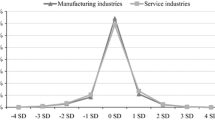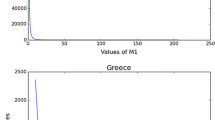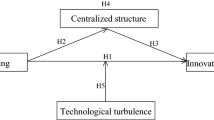Abstract
Whereas technical standards and Standard Setting Organizations (SSOs) are omnipresent and essential to mass production and communications, relatively little is formally known about the propensity of firms’ decisions to belong to certain SSOs. An understanding of such propensities can explain why some firms join SSOs (and others do not) and have implications for the regulation of SSOs. This paper uses a social network analysis technique to categorize/place firms in SSO communities and then empirically analyzes their propensities to belong to SSOs. We concentrate our study on standard setting organizations’ features and their intellectual property rights (IPR) policies such as licensing rules, disclosure requirements, as well as the features of the decision process of standards. Using data on more than 1060 member firms as participants in 28 SSOs, we are able to uniquely graph the membership of firms in SSOs by highlighting some important characteristics through community detection. The results provide some novel insights into why firms might choose certain SSO communities over others.


Similar content being viewed by others
Data availability
The data used in this study are publicly available from the sources listed.
Notes
While there are multiple ways to categorize these institutions, three categories are often utilized, i.e., (1) formally recognized standard bodies; (2) quasi-formal standard bodies; and (3) standardization consortia. Whatever the category, it is usually stakeholders that work together on a voluntary basis to produce standards [17]. Thus, SSOs incorporate all variants of groups that develop standards, including Special Interest Groups (SIGs), standard-development organizations, consortia, and other entities.
“Standard Essential Patents (SEPs) are patents that are unavoidable for the implementation of a standardized technology. They represent core, pioneering innovation that entire industries will build upon”, https://www.ipwatchdog.com/2019/02/04/standard-essential-patents-myth-realities-standard-implementation/id=105940/.
Pajek is a network analysis software developed by de Nooy et al. [18]. It is a computer program for the analysis and visualization of large networks having numerous vertices (in Slovenian language pajek means ‘spider’), see [6]. There is a variety of software tools that have been developed for social network analysis (see [41]). The most popular software packages include Pajek, UCINET 6, NetDraw, Gephi, E-Net, KeyPlayer 1, StOCNET and Automap (there may also be some pirated versions – see [26]). We employ Pajek in this study because it has efficient algorithms for analyzing large networks in addition to its powerful visualization function(s). See Apostolato [1] for an overview of software applications of social network analysis.
For a list of standards, see https://www.consortiuminfo.org/links/#.WxXiUYjFKUk. The list includes categorized links and overviews of 1068 organizations, and more are added as they are announced.
For instance, in 2014, Unwired Planet, that acquired a portfolio of more than 2,800 patents from Ericsson in 2013, asserted that six of these patents were infringed in the UK against a group of defendants including Huawei, Samsung and Google. Unwired Planet claimed that five of the six patents were essential to a portion of ETSI’s 4G LTE standard. A UK High Court agreed with Unwired Planet’s construction and concluded that some of the patents were essential to the standard and thereby infringed ([16]; also see [27]).
We also reference Bekkers and Updegrove ([9]) to obtain additional information for IPR policies that are necessary in our empirical analysis.
The Louvain method uses a hierarchical local greedy technique to maximize modularity and is said to be one of the methods with the highest efficiency, both in speed and quality as in [2], and [30]. The method is a greedy optimization method that attempts to optimize the “modularity” of the network (see [2] for details on modularity). The optimization is performed in two steps. First, the method looks for “small” communities by optimizing modularity locally. Second, it aggregates nodes belonging to the same community and builds a new network whose nodes are the communities. These steps are repeated iteratively until a maximum of modularity is attained and a hierarchy of communities is produced [11].
The SCDB database does not distinguish between “royalty-free” and “royalty-free on top of FRAND”. In principle, as indicated by Baron and Spulber [5], royalty-free licensing offers could be unreasonable or discriminatory, e.g. if they included broad cross-licensing requests. However, in our paper, we consider no difference between the two licensing terms.
See the details of the multinomial logit model in Wooldridge [42], p. 644.
The impact of market power or HHI here provides an interesting contrast across communities.
In our sample, Community 4 had the highest average quorum at 0.54 (Table 3).
References
Apostolato, I.-A. (2013). An overview of software applications for social network analysis. International Review of Social Research, 3(3), 71–77.
Aynaud, T., Blondel, V. D., Guillaume, J.-L., & Lambiotte, R. (2013). Multilevel local optimization of modularity, Ch. 13. In C.-E. Bichot & P. Siarry (Eds.), Graph Partitioning (pp. 315–345). Hoboken, NJ Wiley. https://doi.org/10.1002/9781118601181.ch13.
Baron, J., Contreras, J. L., Husovec, M., & Larouche, P. (2019). Making the rules: The governance of standard development organizations and their policies on intellectual property rights. TILEC Discussion Paper #2019-021, Tilburg University. https://core.ac.uk/download/pdf/188760699.pdf.
Baron, J., & Pohlmann, T. (2013). Who cooperates in standards consortia - rivals or complementors? Journal of Competition Law and Economics, 9(4), 905–929.
Baron, J., & Spulber, D. F. (2018). Technology standards and standards setting organizations: Introduction to the Searle Center Database. Journal of Economics & Management Strategy, 27(3), 462–503.
Batagelj, V., & Mrvar, A. (2004). Pajek — Analysis and visualization of large networks. In M. Jünger & P. Mutzel (Eds.), Graph Drawing Software. Mathematics and Visualization (pp. 77–103). Berlin: Springer. https://doi.org/10.1007/978-3-642-18638-7_4.
Bekkers, R., Bongard, R., & Nuvolari, A. (2011). An empirical study on the determinants of essential patent claims in compatibility standards. Research Policy, 40(7), 1001–1015.
Bekkers, R., & Martinelli, A. (2012). Knowledge positions in high-tech markets: Trajectories, standards, strategies and true innovators. Technological Forecasting and Social Change, 79(7), 1192–1216.
Bekkers, R. N. A., & Updegrove, A. (2012). A study of IPR policies and practices of a representative group of standard setting organizations worldwide. Presentation at the Symposium on Management of Intellectual Property in Standard-Setting Processes, October, Washington D.C. https://pure.tue.nl/ws/portalfiles/portal/3481684/706385876829719.pdf.
Blind, K., & Edler, J. (2003). Idiosyncrasies of the software development process and their relation to software patents: Theoretical considerations and empirical evidence. NETNOMICS, 5(1), 71–96.
Blondel, V. D., Guillaume, J.-L., Lambiotte, R., & Lefebvre, E. (2008). Fast unfolding of communities in large networks. Journal of Statistical Mechanics: Theory and Experiment, 10, 1–12. https://doi.org/10.1088/1742-5468/2008/10/P10008.
Braveman, B. (2013). Standard-setting organizations can be risky business for their members, manuscript. Toulouse: Toulouse School of Economics.
Burt, R. S. (1992). Structural Holes: The Social Structure of Competition. Cambridge: Harvard University Press.
Chiao, B., Lerner, J., & Tirole, J. (2007). The rules of standard-setting organizations: An empirical analysis. RAND Journal of Economics, 38(4), 905–930.
Clarkson, G. (2004). Objective identification of patent thickets: A network analytic approach. Harvard Business School, Doctoral Thesis.
Contreras, J. L. (2017), “Essentiality and standards-essential patents,” Ch. 13, in J. L. Contreras (ed.), The Cambridge Handbook of Technical Standardization Law: Competition, Antitrust, and Patents (pp. 209–230). Cambridge: Cambridge University Press.
Contreras, J. L. (2019). Technical standards, standards-setting organizations, and intellectual property: a survey of the literature (with an emphasis on empirical approaches), Ch. 9. In B. Depoorter, P. Menell and D. Schwartz (eds.), Research Handbook on the Economics of Intellectual Property Law (Vol 2: Analytical Methods, pp. 185–235). Cheltenham: Edward Elgar.
de Nooy, W., Mrvar, A., & Batagelj, V. (2005). Exploratory Social Network Analysis with Pajek. Cambridge: Cambridge University Press.
Epstein, R. A., & Kappos, D. J. (2013). Legal remedies for patent infringement: From general principles to FRAND obligations for standard essential patents. Competition Policy International, 9(2), 69–164.
Farrell, J., Hayes, J., Shapiro, C., & Sullivan, T. (2007). Standard setting, patents, and hold-up. Antitrust Law Journal, 74(3), 603–670.
Farrell, J., & Saloner, G. (1988). Coordination through committees and markets. RAND Journal of Economics, 19(2), 235–252.
Freeman, L. C. (1979). Centrality on social networks conceptual clarification. Social Networks, 1(3), 215–239.
Gmati, H., Mouakher, A., & Hilali-Jaghdam, I. (2019). Bi-ComDet: Community detection in bipartite networks. Procedia Computer Science, 159(C), 313–322.
Goel, R. K. (2002). Uncertain patent scope and R&D investment. Economia Internazionale/International Economics, 55(1), 17–24.
Goel, R. K. (2020). IPR infringement in the United States: Impacts on the input and output of R&D. Journal of Technology Transfer, 45(2), 481–493.
Goel, R. K., & Nelson, M. A. (2009). Determinants of software piracy: Economics, institutions, and technology. Journal of Technology Transfer, 34(6), 637–658.
Goel, R. K., & Nelson, M. A. (2020). Do external quality certifications improve firms’ conduct? International evidence from manufacturing and service industries. Quarterly Review of Economics and Finance, 76(C), 97–104.
Jiang, J., Goel, R. K., & Zhang, X. (2019). Knowledge flows from business method software patents: Influence of firms’ global social networks. Journal of Technology Transfer, 44(4), 1070–1096.
Kindleberger, C. P. (1983). Standards as public, collective and private goods. Kyklos, 36(3), 377–396.
Lancichinetti, A., & Fortunato, S. (2009). Community detection algorithms: A comparative analysis. Physical Review E 80, 056117. https://doi.org/10.1103/PhysRevE.80.056117.
Lerner, J., & Tirole, J. (2006). A model of forum shopping. American Economic Review, 96(4), 1091–1113.
Lerner, J., & Tirole, J. (2015). Standard-essential patents. Journal of Political Economy, 123(3), 547–586.
Leydesdorff, L., & Vaughan, L. (2006). Co-occurrence matrices and their applications in information science: Extending ACA to the web environment. Journal of the American Society for Information Science and Technology, 57(12), 1616–1628.
Lusher, D., Koskinen, J., & Robins, G. (Eds.). (2013). Exponential Random Graph Models for Social Networks: Theory, Methods, and Applications. Cambridge: Cambridge University Press.
Maskus, K., & Merrill, S. A. (Eds.). (2014). Patent Challenges for Standard-Setting in the Global Economy: Lessons from Information and Communication Technology. Washington, DC: The National Academies Press. https://doi.org/10.17226/18510.
Newman, M., & Girvan, M. (2004). Finding and evaluating community structure in networks. Physical Review E, 69(2), 026113.
Rotta, R., & Noack, A. (2011). Multilevel local search algorithms for modularity clustering. ACM Journal of Experimental Algorithmics, Article No.: 2.3. https://doi.org/10.1145/1963190.1970376.
Schmoch, U., Laville, F., Patel, P., & Frietsch, R. (2003). Linking technology areas to industrial sectors, Final Report to the European Commission, DG Research, Contract n° HPV2-CT-2001-00011, November, https://pdfs.semanticscholar.org/ba68/b230ba1541fb3e5571bc9fb53e698ab5b7de.pdf.
Scotchmer, S. (2004). Innovation and Incentives. Cambridge: MIT Press.
Spulber, D. F. (2019). Standard setting organisations and standard essential patents: Voting and markets. The Economic Journal, 129(619), 1477–1509.
Wasserman, S., & Faust, K. (2009). Social Network Analysis: Methods and Applications. Cambridge: Cambridge University Press.
Wooldridge, J. M. (2010). Econometric Analysis of Cross Section and Panel Data. (2nd Edition). Cambridge: MIT Press.
Acknowledgements
We thank a referee for numerous useful suggestions. An earlier version of this paper was circulated as a Kiel Working Paper (#2153).
Author information
Authors and Affiliations
Corresponding author
Additional information
Publisher’s note
Springer Nature remains neutral with regard to jurisdictional claims in published maps and institutional affiliations.
Supplementary Information
ESM 1
(DOCX 125 kb)
Rights and permissions
About this article
Cite this article
Jiang, J., Goel, R.K. & Zhang, X. IPR policies and determinants of membership in Standard Setting Organizations: a social network analysis. Netnomics 21, 129–154 (2020). https://doi.org/10.1007/s11066-020-09144-6
Accepted:
Published:
Issue Date:
DOI: https://doi.org/10.1007/s11066-020-09144-6
Keywords
- Standard setting organizations
- Intellectual property rights policies
- Network analysis
- Community detection
- Patents
- Licensing




